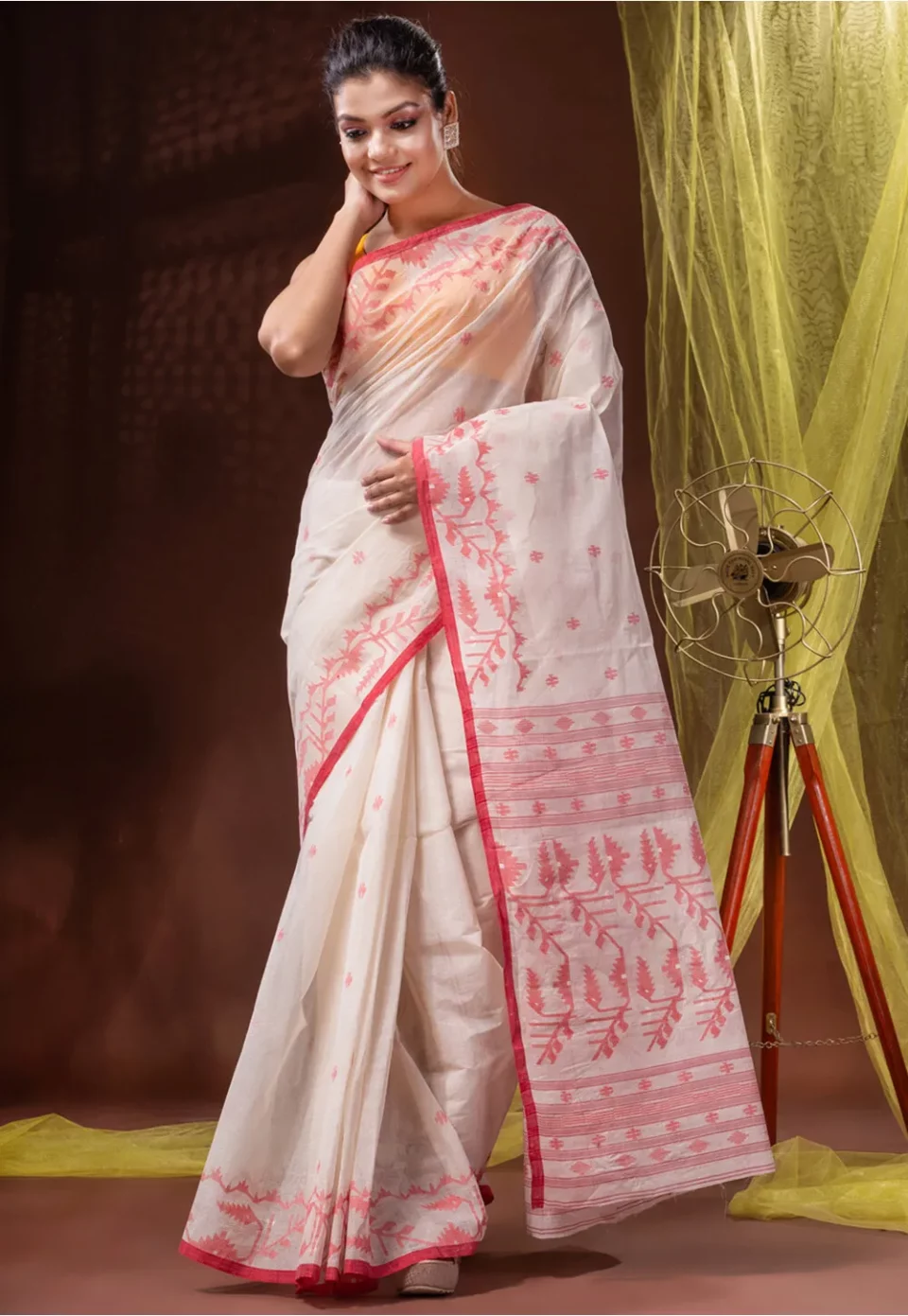The divine feminine is a frequency match to absolute Goddess energy. Jamdani sarees play a huge role in women’s empowerment, especially being a part of the state of Bengal, where Maa Durga resides. It represents the divine omnipresence whenever someone taps into their divine feminine energy. Jamdani sarees symbolize their innate divinity even beyond Bengal.
Moreover, the Jamdani saree is one of the factors uniting East Bengal (the country of Bangladesh) and West Bengal (one of the states in India). Post-partition, there were a lot of internal and external rifts amongst the Bengalis, but what has tied them together to date are cultural roots like sarees, mishits (sweets), fish, festivities and ‘bhite bari’ (old ancestral home). Naturally, these factors have made India and Bangladesh’s international relations significantly good.
Saree is an Emblem of Grace and Elegance
Resistance comes in many forms, and as the famous saying in Dr. Strange goes, one often lets go to gain control. That is the best one-liner representation of the eastern philosophy. The divine grace of Jamdani resonates somewhat similarly.
Feminine power is not over the top, it is seated deep within one’s nature. It rises with self-realization. When the Jamdani fabric is draped around a woman, she self-actualizes the Goddess part of herself. That divinity is seated in everyone. She embodies an amalgamated form of self-sufficiency and abundance.
Connection with Goddesses and Mythology
The divine feminine can be anyone — the abundant Maa Lakshmi, the courageous Maa Durga or the knowledgeable Maa Saraswati. In Hindu mythology, most goddesses are depicted wearing sarees. We often visualise a mother figure in the divine goddesses, it shows the self-fulfilling nature of women, she needs no one to be complete, she is the source, yet she is the end.
As Ganga, she is the Gangotri and the mohona where the river blends in with the ocean. Much like the fluid emotional state of a woman’s mind, the Jamdani sarees are very flexible and can be draped in whatever ways are needed. Every new drape opens a new world of multiple divine possibilities. As they say, women bear the portal to the divine realm.
Every divine parallel reality brings us to one of the ten ‘Maha avatars’ of the divine feminine, may it be Kali, Tara, Bhuvaneshwari, Dhumavati, or Saraswati. The Tara avatar of the divine feminine is highly worshipped and meditated upon by many as she is the goddess of wisdom. She differentiates between knowledge and materialism and makes us understand our true self-worth as divine beings.
Anyone can wear a Jamdani saree; the beauty and the grace we often seek lie within us, not necessarily within the saree. So does the validation.
Empowerment and Resilience
Draping a saree is an art passed down through generations, symbolizing the resilience and strength inherent in women. The intricate process of pleating and folding the fabric represents the multifaceted roles and responsibilities women effortlessly manage.
Cultural Significance and Rituals
Jamdani sarees are a must in family rituals like aiburo bhat (the last meal of a girl before marriage), mukhe bhaat / annaprashon (the first grain-based meal of a newborn), saad (the baby shower of a pregnant lady), weddings, engagements, etc. Jamdani sarees are widely known in Bengal and its neighbouring states as a personification of godly blessings, auspiciousness and purity. It often finds its place in the bridal trousseau.
Redefining Modern Femininity
Modern femininity (especially after the latest wave of the feminist movement), much like masculinity, has gone through a lot of stormy polarities. Several new age movements have propped up to meddle with the new-found status quo of modern women, however, the empowerment narratives are so mature that they have grown adaptive to every change. By the end, they have become the ultimate divine feminine, ruling today’s world.
The charisma these women adorn is noteworthy and will be passed on to the upcoming generations. This globalized age has seen the multifaceted nature of women, much like the ten sides of a devi, every woman must celebrate her womanhood as a symbol of timeless divine glory.

